Keynote speakers
Rosa Poch
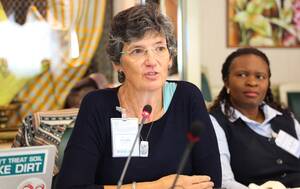
Chair of the Intergovernmental Technical Panel on Soils
Rosa is an agricultural engineer. She graduated in 1987 from the Polytechnic University of Catalonia and holds both MSc (1989) and PhD degrees in Soil Science (1992). She is a professor of Soil Science at the University of Lleida (UdL). Her research fields are soil genesis and micromorphology, soil degradation and conservation, watershed hydrology, geoarchaeology, soil physics (sp. soil porosity), soil rehabilitation by mining, soil as carbon pool in the frame of global change and social awareness of soil science (as teaching and art). Her geographical frame is the semiarid Mediterranean, but she also worked in other environments (tropical, temperate, mountain, desert). She has been a visiting professor, at CSIRO Land&Water (Adelaide); University of California-Davis; Universidad Nacional Agraria (Managua) and Universidad Nacional de Colombia among others. She is Head of the Micromorphology Lab of the UdL, Coordinator of the Interuniversity Master on Soil and Water Management since 2008 and organizer/lecturer of several international intensive courses on Soil Micromorphology, in both Latin America and Europe. She also chaired the IUSS Commission 1.1. (2010-14, 14-18). She is author or co-author of more than 100 publications, including the Soil Chapter of the three Climate Change Reports of Catalonia (2005, 2010, 2016) and she is also Editor-In-Chief of the Spanish Journal of Soil Science.
Diana Wall
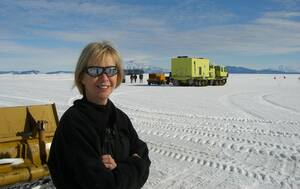
School of Global Environmental Sustainability, Colorado State University, USA
Diana is the Director of the School of Global Environmental Sustainability, a University Distinguished Professor and Professor in Biology at Colorado State University. She is an environmental scientist and a soil ecologist and her research has focused on the Antarctic McMurdo Dry Valleys. Ms Wall investigates ecosystem processes, soil biodiversity and ecosystem services and how these are impacted by global changes. The Wall Valley was named in recognition of her research in the McMurdo Dry Valleys. She is currently Chair of the Scientific Advisory Committee of the Global Soil Biodiversity Initiative (globalsoilbiodiversity.org ). She was co-editor of the Global Atlas of Soil Biodiversity (2016) and a member of the editorial team for the Global Soil Biodiversity Assessment (2020). Diana was president of the Society of Nematologists and the Ecological Society of America. She is an elected member of the National Academy of Sciences. Research | More
Wim van der Putten
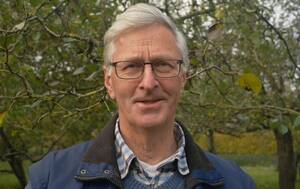
Netherlands Institute of Ecology, Wageningen, the Netherlands
Wim is head of the Terrestrial Ecology at the Netherlands Institute of Ecology (NIOO) and special professor in Functional Biodiversity at Wageningen University. Wim’s main interest is in aboveground-belowground multitrophic interactions, plant-soil feedback, succession, (soil) biodiversity, invasions, and climate change-induced range shifts. He had an ERC Advanced grant on community re-assembly under climate warming, is elected member of the Royal Netherlands Academy of Arts and Sciences, and member of the Board of Reviewing Editors of Science. He has co-authored an overview report on soil biodiversity for the EC DGXI, and is co-editor of both the European and Global Atlases of Soil Biodiversity. He co-founded the Wageningen Centre for Soil Ecology and is member of the Scientific Advisory Committee of the Global Soil Biodiversity Initiative (GSBI https://globalsoilbiodiversity.org/). He has been member of the editorial team of the first Global Soil Biodiversity Assessment (https://nioo.knaw.nl/en/news/huge-mandate-worldwide-soil-biodiversity-analysis) and of the Global Soil Biodiversity Assessment (2020). He has led the soil assessment for the European Academy of Sciences Environment Council (EASAC) (https://easac.eu/publications/details/opportunities-for-soil-sustainability-in-europe/). Contacts
Daphne Miller
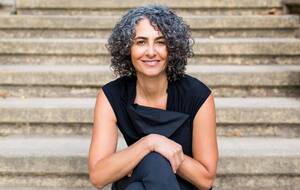
Department of Family Medicine, University of California, USA
In a typical work week, Daphne Miller spends as much time with ecologists, soil scientists, and farmers as she does with medical professionals. She is a family physician, science writer, Clinical Professor at the University of California San Francisco, and Research Scientist at the University of California Berkeley School of Public Health. As founder of the Health from the Soil Up Initiative, she studies the connections among health, culture, and agriculture, with the goal of building a healthier and more resilient food system from the soil up. Daphne is a regular health and science contributor to the Washington Post. She has two books about food, agriculture and health. Daphne has consulted for and presented to organizations around the globe FAO, the Indigenous Terra Madre and Slow Food International. A pioneer in the “Healthy Parks, Healthy People” initiative, she helped build linkages between our medical system and our park system. Her 2009 Washington Post article “Take a Hike and Call Me in the Morning” is widely credited with introducing “park prescriptions” into medical practice. Daphne is a graduate of Brown University and Harvard Medical School and completed her family medicine residency and an NIH-funded primary care research fellowship at UCSF. She is on the Advisory Board of the Center for Health and Nature at Oakland Children’s Hospital and the Edible Schoolyard Foundation and a past Fellow at the Berkeley Food Institute and the University of Arizona Center for Integrative Medicine. She lives and gardens in Berkeley, California.
Felipe Pasini
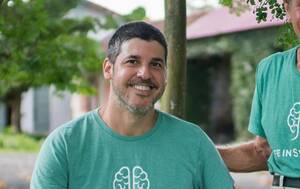
Farmer, Brazil
Felipe is a Brazilian farmer, journalist and holds a MSc in Environmental Sciences and Conservation from the Federal University of Rio de Janeiro. Since 2006, he has been working closely with the renowned farmer Ernst Götsch on projects in tropical and Mediterranean zones. In 2018, he moved to the driest municipality in Portugal to help implement drought-adapted soil practices based on successional agroforestry for farmers and public schools. In 2011, he launched the education initiative Agenda Gotsch and later Life in Syntropy, which have helped thousands of farmers adopt more regenerative practices. He is's currently a member of the international consortium The Biotic Pump Greening Group, an initiative committed to presenting solutions for the restoration of highly arid zones.
Artistic perspectives on soil biodiversity
Christopher Marley - When soil biodiversity meets with art
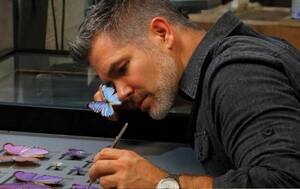
Christopher has been an artist and a naturalist his whole life. “I was a reptile fanatic growing up. I always spent a lot of time outside, just exploring and looking for creatures,” he says. His love of nature followed him while he traveled the world as a fashion model. During his downtime, he loved finding species of insects that he had never seen before. “If I'm in a jungle or an ecosystem that is new to me, I want to see what's crawling around out there,” he says. His focus went through a major shift many years ago in a Bangkok market when he came across some preserved beetles. "Though terribly preserved, the specimens blew my mind. It was a magical, transformative experience for me,” he says. Marley is passionate about the benefits of interacting with nature and wants to share them with others. “Not only does humanity have a right to interact in a healthy way, in a symbiotic way with the natural world, but we have a responsibility to do so,” he says. All of the vertebrate specimens Marley receives from institutions or individuals have died of natural causes, usually in captivity. “Everything dies eventually. And when these do, I try to take those organisms and turn them into something beautiful,” he says. His travelling museum exhibits Exquisite Creatures and Biophilia were created as a dialogue of art, nature and science. He says: "It's a little bit of that magical space between those three different elements of the human experience". He believes, "if we can help people to better appreciate these organisms, they almost have a second life. Without attention brought to some of the more obscure, less-loved organisms, sometimes no one even knows that they are threatened until it is too late”. More
Andy Murray - Photographing soil animals
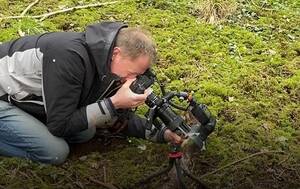
Andy specialises in photographing and documenting the incredible beauty and lives of soil mesofauna, the tiny animals living below our feet. His unique photos have been featured in many books, including The Fundamentals of Soil Ecology, the Global Soil Biodiversity Atlas, the State of Knowledge of Soil Biodiversity: Status, Challenges and Potentialities as well as numerous magazines, articles and exhibitions around the world. Apart from being a macro and micro-photographer, entomologist and writer, Andy has also been a musician, a clown, an archaeologist, a poet and a chef...He has been fascinated by the natural world since childhood, and embraced digital photography as the best medium to truly explore it. His passion for Collembola led him to travel around the world for four years, exploring and photographing them and the other soil mesofauna. He still kneels in mud on an almost daily basis, back in the UK, still exploring and creating portraits of the soil animals that he loves so much. A note from him to conclude: “Notice, enjoy and appreciate the small things in life. They are often more important than you realize”. More
Contact | Watch the video - Music written by Andy Murray, arranged and produced by David Wisdom
Suzette Bousema and Nadia Soudzilovskaia - Super Organism: the hidden mycorrhizal fungal network
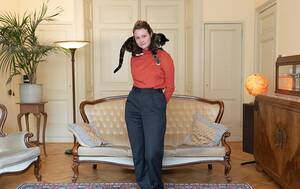
Suzette is a visual artist from the Netherlands. With the same curiosity as a scientist, she visualizes contemporary environmental topics. Planetary conditions and humans’ place in them are the starting point in her work. By visualizing the beauty of scientific research, her aim is to contribute to already ongoing environmental debates in a positive way. The multimedia project ‘Super Organism’ was developed in collaboration with Nadia, a soil scientist-professor at Hasselt University in Belgium and Leiden University in the Netherlands, together with her PhD students. Super Organism is the mycorrhizal fungal network: Invisible to the naked eye, it is the largest living system that ever existed on Earth. Commonly described as the ‘internet’, or the ‘brain’ of the forest, it plays a crucial role in ecosystems, carbon storage as well as our very existence as almost all plants are connected through this below-ground fungal network. Often referred to as a form of communication, plants “trade” carbon with the fungal network, improving access to nutrients, minerals and water. Just think that: “More than half of the carbon processed by plants during photosynthesis passes through mycorrhizae and is stored in soil”. She continues by saying “This ancient symbiosis between plants and fungi is threatened by human activities, such as the use of fertilizers and pesticides, deforestation and change in land use”. This project explores how we can experience mycorrhizae without anthropomorphizing it, yet still connect to this hidden network, using all our senses. Contacts
